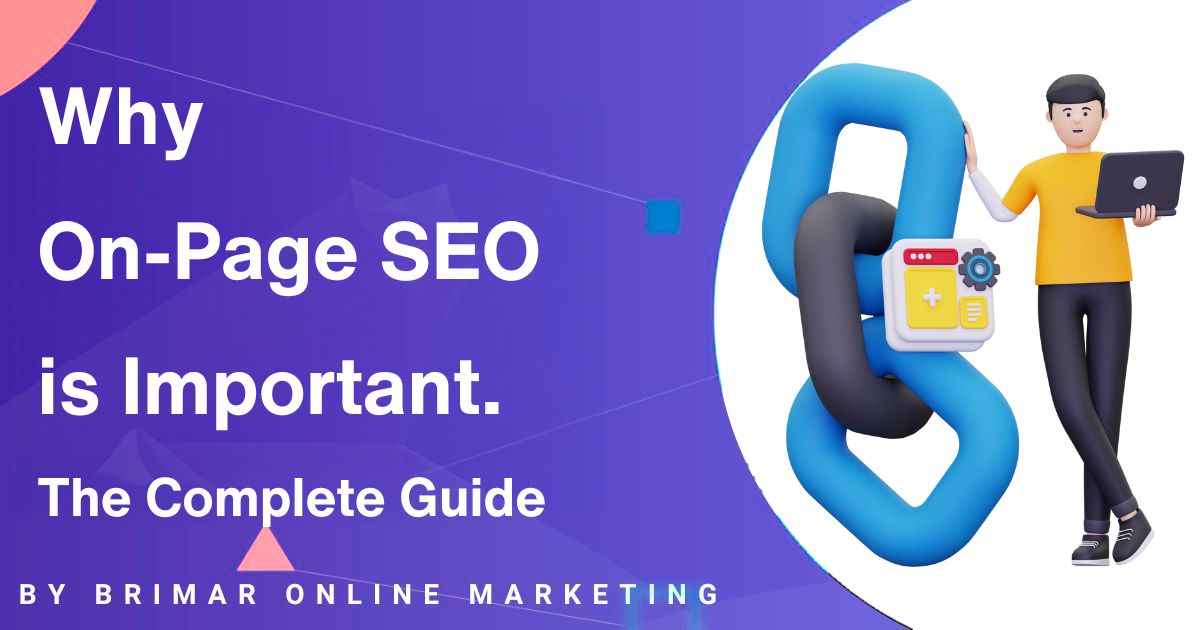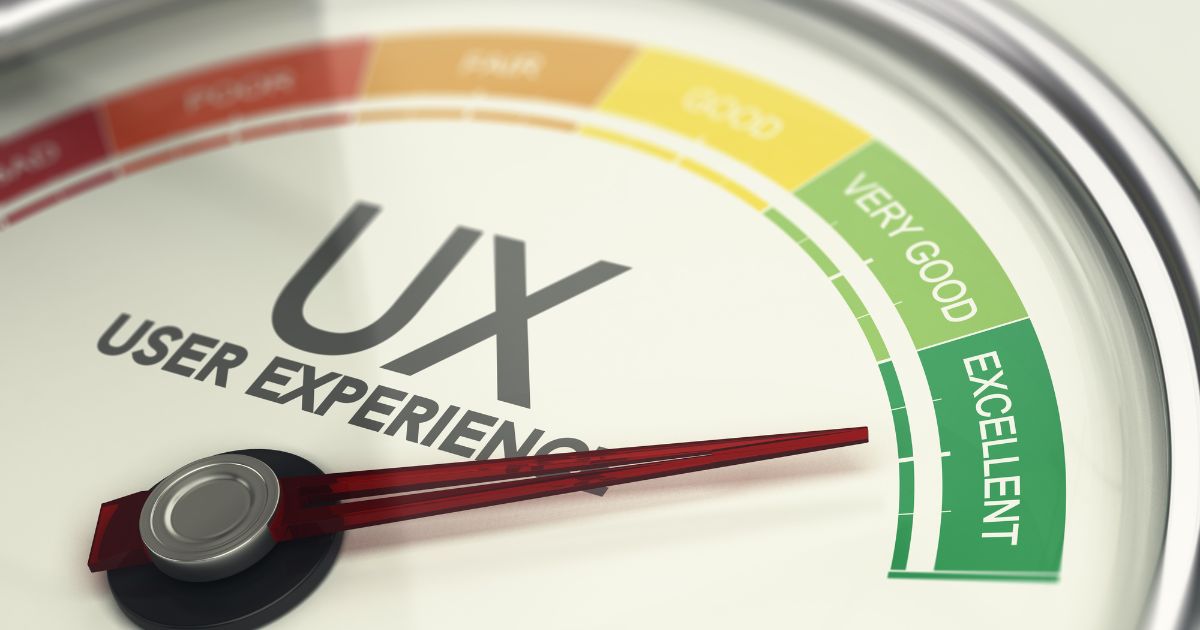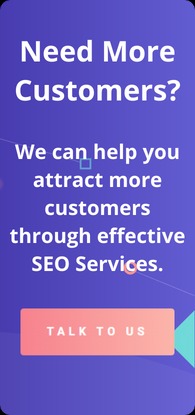
Imagine you’ve built an amazing website with valuable information and stunning visuals.
But without visibility on search engines, your hard work might go unnoticed.
This is where on-page SEO becomes essential.
On-page SEO, which involves optimizing individual web pages to rank higher in search engine results,
is a key factor in attracting organic traffic and boosting your online presence.
Focusing on various on-page elements like title tags, meta descriptions, and internal links can significantly improve your site’s performance and user experience.
In this article, we’ll explore why on-page SEO is so important, diving into crucial on-page SEO factors, best practices, and strategies to help you achieve higher search engine rankings.
Whether you’re a local business or a content creator, understanding and implementing these on-page SEO techniques will give you the best chance of reaching your target audience and driving more organic traffic to your site.
Understanding On-Page SEO
What is On-Page SEO?
On-page SEO involves strategically optimizing individual web pages to achieve higher rankings in search engine results and drive increased organic traffic.
This involves various elements like title tags, meta descriptions, header tags, URL structure, internal links, and content.
By focusing on these on-page factors, website owners can ensure that their pages provide valuable information to users and are easily understood by search engine crawlers.
The importance of on-page SEO in a broader SEO strategy cannot be overstated.
It forms the foundation for search engine optimization efforts, ensuring that each page is optimized for search engines and users alike.
This includes using relevant keywords naturally within the content, ensuring the page loads quickly, and making the site mobile-friendly.
On-page SEO helps search engines understand the context of your content, ultimately leading to higher search rankings and better visibility.
Difference Between On-Page and Off-Page SEO
On-page SEO and off-page SEO are two sides of the same coin, both essential for a well-rounded SEO strategy.
On-page SEO focuses on optimizing elements within your website, such as content, HTML source code, and internal linking.
This ensures that each page is relevant and provides a good user experience.
On the other hand, off-page SEO involves activities outside your website that influence your search engine rankings.
This includes link building, social media engagement, and other external factors.
Off-page SEO signals to search engines that your site is authoritative and trustworthy, based on how other websites and users interact with it.
While on-page SEO is about making your site’s content and structure as effective as possible, off-page SEO is about enhancing your site’s authority and reputation.
Together, they create a comprehensive SEO strategy.
On-page SEO ensures that your site is well-optimized for search engine crawlers, while off-page SEO builds the credibility and authority needed to rank higher in search engine results.
Both are crucial, and neglecting one can undermine your overall SEO efforts.
Start Attracting Customers Through SEO Today!
We can help you attract new customers through Tailored Search Engine Optimization Strategies for Your Business.
Key On-Page SEO Factors
Title Tags
Title tags are more than just a headline for your web pages;
they play a pivotal role in how search engines understand the content of your page.
These tags are displayed in search engine results and browser tabs, directly influencing your click-through rate (CTR).
A well-crafted title tag should include your target keywords and be compelling enough to entice users to click.
It’s important to keep them under 60 characters to ensure they are fully visible in search results.
Meta Description
Meta descriptions provide a brief summary of your page content and appear beneath the title tag in search results.
While they don’t directly impact search rankings, they significantly influence user behavior.
Crafting a compelling meta description that includes relevant keywords can increase your CTR.
Aim for concise, informative descriptions around 155-160 characters that clearly convey the value of your page to potential visitors.
Header Tags
Header tags (H1, H2, H3, etc.) are essential for structuring your content in a way that is easy for both users and search engines to understand.
The H1 tag is typically reserved for the main title of your page, while H2 and H3 tags are used for subheadings.
Proper use of header tags helps improve readability and allows search engines to better grasp the hierarchy and relevance of your content, which can positively impact your search engine rankings.
URL Structure
A clean, descriptive URL structure is vital for both SEO and user experience. URLs should include relevant keywords and be easy to read.
Remember to steer clear of using long, complex URLs packed with unnecessary parameters.
Instead, opt for short, descriptive URLs that give users and search engines a clear idea of what the page is about.
For example, a URL like “www.example.com/seo-services” is preferable to “www.example.com/index.php?id=1234”.
Internal Links
Internal linking involves linking to other pages within your website, helping search engines understand your site’s structure and the relationship between different pages.
Internal links also enhance user experience by guiding visitors to related content, keeping them on your site longer.
Ensure that your internal links use descriptive anchor text and connect relevant pages to maximize their SEO benefits.
External Links
External links, or outbound links, lead users to content on other websites.
These links can add credibility to your content by associating it with reputable sources.
However, balance is key.
Too many external links can distract users from your site, while too few might not provide enough context or authority.
Use external links strategically to enhance your content without overwhelming your audience.
Alt Tags
Alt tags, or alternative text, are used to describe images on your website.
This not only helps visually impaired users understand the content of your images but also provides search engines with additional context.
Properly optimized alt tags should be descriptive and include relevant keywords where appropriate.
This practice improves your website’s accessibility and can positively impact your image search rankings.
Content and Keywords
High-Quality Content
High-quality content is the backbone of effective on-page SEO.
It’s what keeps visitors engaged and coming back for more.
Search engines, like Google, prioritize content that provides valuable information, addresses user intent, and offers a seamless reading experience.
This means your content should be well-researched, well-written, and relevant to your audience.
Including helpful content that answers questions, solves problems, or entertains readers will boost your search engine rankings and build trust with your audience.
Keyword Research
Keyword research is a fundamental step in creating content that ranks well in search engine results.
Identifying the right target keywords involves understanding what your potential customers are searching for and how they phrase their queries.
Tools such as Google Keyword Planner, Ahrefs, and SEMrush can assist you in discovering relevant keywords with high search volume and low competition.
Integrating these keywords naturally into your content will make it easier for search engines to understand and rank your pages.
Avoiding Keyword Stuffing
While keywords are essential for on-page SEO, overloading your content with them —known as keyword stuffing— can harm your rankings.
Search engines have become sophisticated at detecting unnatural keyword usage and may penalize your site for it.
Instead, concentrate on incorporating keywords naturally into your content.
Aim for a balance where keywords fit seamlessly into sentences and paragraphs.
This not only helps with search engine rankings but also enhances the reading experience for your audience.
Long-Tail Keywords
Targeting long-tail keywords is a smart strategy for achieving higher rankings with less competition.
These are longer, more specific keyword phrases that users are likely to type when they’re closer to making a purchase or finding specific information.
For instance, instead of targeting a broad term like “SEO,” you might target “on-page SEO strategies for small businesses.”
Long-tail keywords often have a lower search volume, but they attract more targeted traffic and can improve your chances of ranking well in search results.
They also tend to reflect the intent of your audience more accurately, leading to better engagement and conversions.
By focusing on high-quality content, conducting thorough keyword research, avoiding keyword stuffing, and targeting long-tail keywords, you can enhance your on-page SEO and attract more organic traffic to your site.
Technical Aspects of On-Page SEO
Page Speed
Site speed is crucial for a positive user experience and achieving high search engine rankings.
Slow-loading pages frustrate visitors, leading to higher bounce rates and lower conversion rates.
Search engines, such as Google, rank fast-loading websites higher in their search results.
Optimizing images, leveraging browser caching, and minimizing JavaScript can significantly improve page speed, enhancing user satisfaction and boosting your website’s SEO performance.
Mobile Optimization
As the usage of mobile devices continues to rise, it is crucial to ensure that your website is optimized for mobile access.
A responsive design that adjusts seamlessly to various screen sizes enhances user experience and keeps visitors engaged.
Search engines favor mobile-optimized sites, meaning a mobile-friendly design can lead to higher rankings in search engine results.
Testing your website on different devices and using Google’s Mobile-Friendly Test can help identify and fix issues, ensuring your site is accessible to all users.
Schema Markup
Schema markup, a form of microdata, helps search engine bots understand the content of your pages better.
By adding schema markup to your HTML, you can provide detailed information about your content, such as product details, reviews, or events.
This enhances the way your page appears in search results, often leading to rich snippets that attract more clicks.
Implementing schema markup can improve your site’s visibility and click-through rate, providing a competitive edge in search engine optimization.
Duplicate Content
Duplicate content can harm your SEO efforts by confusing search engine algorithms, leading to lower rankings.
When search engines encounter duplicate content, they struggle to determine which version to index and rank.
To avoid this, ensure that each page on your website has unique content.
Use canonical tags to indicate the preferred version of a page and regularly audit your site for duplicate content.
Maintaining original, high-quality content across your website helps improve your search engine rankings and provides a better user experience.
These technical aspects of on-page SEO are fundamental to building a strong online presence.
By focusing on page speed, mobile optimization, schema markup, and avoiding duplicate content,
you can enhance your website’s performance, attract more visitors, and achieve higher search engine rankings.
Enhancing User Experience
User Experience
On-page SEO plays a significant role in enhancing user experience.
When your website is optimized correctly, it becomes easier for visitors to navigate and find what they’re looking for.
Elements like clear title tags, descriptive meta descriptions, and structured header tags
make your content more accessible and understandable, not just for search engines but also for users.
A well-structured website guides visitors smoothly from one page to another,
reducing frustration and increasing the likelihood of them staying longer and engaging with your content.
Engaging Content
Creating content that resonates with your audience is at the heart of effective on-page SEO.
This means producing high-quality content that provides valuable information and addresses the search intent of your visitors.
When people land on your page, they’re looking for specific answers or solutions.
By delivering relevant and helpful content, you not only satisfy their needs but also encourage them to explore your site further.
Using targeted keywords naturally within your content helps ensure that it’s both engaging for readers and optimized for search engines.
Conversion Rate Optimization
Optimizing your on-page SEO also contributes to better conversion rates.
When your site is easy to navigate and full of valuable information, visitors are more likely to take desired actions,
whether that’s signing up for a newsletter, filling out a contact form, or making a purchase.
Strategies like clear calls-to-action, compelling meta descriptions, and optimized images (using alt tags) all play a part in guiding users towards conversion.
Additionally, fast page speeds and mobile optimization ensure that all users, regardless of device,
have a seamless experience, further boosting the likelihood of conversions.
Focusing on these aspects of on-page SEO creates a user-friendly environment that meets the needs of your visitors and drives your business goals.
Tools and Resources for On-Page SEO
When it comes to optimizing your website, having the right tools and resources can make a world of difference.
Let’s delve into some essential tools that can help enhance your on-page SEO efforts.
Google Search Console
Google Search Console is a must-have for anyone serious about improving their website’s on-page SEO.
This free tool from Google offers a wealth of information and features that can help you monitor and optimize your site’s performance.
- Performance Reports: Track how your website performs in search results, including data on clicks, impressions, average position, and click-through rate (CTR). This insight helps identify which keywords and pages are driving traffic.
- URL Inspection: Check the indexing status of your URLs to ensure that Google is properly crawling and indexing your content. You can also request re-indexing if you’ve made significant changes to a page.
- Coverage Reports: Identify and fix issues that prevent your pages from being indexed. This includes discovering errors like 404 pages or server errors.
- Mobile Usability: Ensure your website is mobile-friendly by identifying and resolving any usability issues that might affect mobile users.
- Sitemaps: Submit your sitemaps to help Google understand the structure of your website and index it more effectively.
Six SEO Tools
Beyond Google Search Console, several other SEO tools can significantly aid in your on-page optimization efforts.
Here are some of them that stand out:
- Ahrefs: Known for its robust backlink analysis, Ahrefs also offers comprehensive tools for keyword research, site audits, and content analysis. It helps you identify high-performing content and provides suggestions for optimization.
- SEMrush: This all-in-one marketing toolkit offers detailed insights into your SEO performance. Features include keyword research, site audits, and competitive analysis, making it easier to optimize your content and strategy.
- Moz Pro: Moz offers a suite of tools designed to improve your search engine visibility. Their on-page grader analyzes specific URLs to provide detailed recommendations for improvement.
- Yoast SEO: Particularly useful for WordPress users, Yoast SEO simplifies on-page SEO with real-time content analysis, keyword optimization, and readability checks.
- Screaming Frog: This website crawler helps identify technical SEO issues such as broken links, duplicate content, and missing meta tags. It’s invaluable for ensuring your site is fully optimized for search engines.
- Google Analytics: While primarily an analytics tool, Google Analytics provides insights into user behavior on your site, helping you understand how visitors interact with your content and where improvements can be made.
Leveraging these tools can streamline your on-page SEO efforts and provide detailed insights to fine-tune your strategy.
Regularly using Google Search Console, along with other specialized SEO tools,
ensures your website remains optimized, user-friendly, and competitive in search engine rankings.
On-Page SEO Strategies for Local Businesses
Local SEO
The Importance of On-Page SEO for Local Businesses and Attracting Potential Customers
For local businesses, having a strong online presence is essential.
On-page SEO plays a significant role in ensuring that local customers can find your business easily.
When people search for products or services nearby, search engines prioritize results that are most relevant and geographically close.
Optimizing your website’s on-page elements can improve your chances of appearing in these local search results.
Local SEO is crucial because it directly connects you with potential customers in your area.
When your website is optimized for local searches, it means that your business information,
such as address, phone number, and operating hours, is readily accessible to users.
This information is often pulled from your website by search engines to populate search engine results pages (SERPs), making it easier for customers to find and contact you.
Local Keywords
Targeting Specific Keywords Relevant to Local Audiences
To effectively reach your local audience, it’s important to use keywords that reflect local search intent.
Incorporate specific keywords that potential customers are likely to use when searching for businesses like yours in their area.
For example, if you run a bakery in San Francisco, keywords like “San Francisco bakery,” “best bakery in SF,” or “bakery near me” are valuable.
Begin by conducting keyword research to pinpoint the most relevant local keywords for your business.
Tools like Google Keyword Planner or Moz’s Keyword Explorer can help you discover what terms people are searching for in your area.
Once you have a list of targeted local keywords, strategically place them in key on-page elements such as:
- Page Titles: Ensure your page titles include local keywords to signal to search engines the geographical relevance of your content.
- Meta Descriptions: Write compelling meta descriptions with local keywords to improve your click-through rate.
- Header Tags: Use local keywords in your header tags (H1, H2, H3) to structure your content effectively.
- Content: Naturally integrate local keywords into your content to enhance its relevance.
- URL Structure: Incorporate local keywords into your URLs to provide additional context to search engines.
- Alt Tags: Use local keywords in the alt tags of images to further boost your local SEO efforts.
By focusing on local keywords and optimizing your on-page elements, you can significantly improve your visibility in local search results, attract more potential customers, and ultimately drive more foot traffic to your business.
Common On-Page SEO Mistakes to Avoid
Keyword Stuffing
Dangers of Overusing Keywords
Using keywords strategically is essential, but overloading your content with them can backfire.
Keyword stuffing not only makes your content difficult to read but it also leads to penalties from search engines.
Instead, focus on natural keyword integration.
Think about how your audience speaks and searches.
This approach ensures your content remains engaging and valuable while still being optimized for relevant keywords.
Ignoring Mobile Users
Consequences of Not Optimizing for Mobile Devices
Mobile optimization is no longer optional.
With a significant portion of web traffic coming from mobile devices, a site that isn’t mobile-friendly will lose out on a huge potential audience.
Users demand a seamless experience, regardless of whether they are on a desktop or a smartphone.
Failing to optimize for mobile devices can lead to high bounce rates and lower search rankings.
Make sure your site design is responsive, and that content is easily accessible on all screen sizes.
Neglecting Page Speed
Impact of Slow-Loading Pages on User Experience and Rankings
Page speed is a crucial factor for both user experience and SEO.
Slow-loading pages frustrate visitors, leading them to leave your site before it even finishes loading.
This not only impacts your bounce rate but also signals to search engines that your site may not be providing a good user experience.
Tools such as Google PageSpeed Insights can be used to identify areas that need improvement.
Investing in faster load times will enhance user satisfaction and boost your search engine rankings.
Avoiding these common on-page SEO mistakes can create a more effective and user-friendly website that appeals to both your audience and search engines.
Final Thoughts
On-page SEO is essential for any website aiming to achieve high search engine rankings and attract organic traffic.
Focusing on crucial elements like title tags, meta descriptions, header tags, and internal linking ensures that your site provides valuable information and an excellent user experience.
High-quality content, strategic keyword research, and proper technical SEO all contribute to a strong online presence.
On-page optimization is not just about pleasing search engine bots;
it’s about making your site helpful and engaging for your target audience.
Don’t miss out on the benefits of a well-optimized website.
Implementing on-page SEO best practices can significantly boost your search rankings and drive more potential customers to your site.
If you’re ready to enhance your online presence and see better results, start optimizing your website’s on-page elements today.
For professional assistance and expert strategies, reach out to Brimar Online Marketing.
Let’s take your SEO efforts to the next level together.
Our SEO Services Have Helped Our Clients Increase Their Revenue!
“I highly recommend Brimar if your looking to grow your online business. You will be satisfied with the high level of expertise and high quality of services. It has helped my business grow by leaps and bounds.”
CEO




